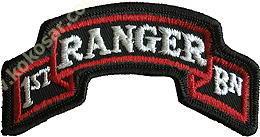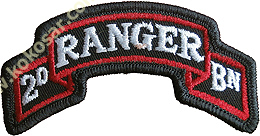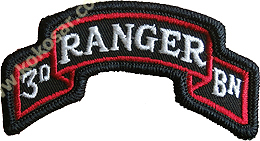|
|
|
SPECIAL
OPERATIONS COMMAND
KOMANDA SPECIJALNIH
OPERACIJA |
| |
|
|
 |
|
 |
 |
|
| |
|
|
|
On a black oval with a 3/16 inch (.48cm) yellow braided inner border
and a 1/8 inch (.32cm) overedge outer border, 2 5/8 inches (6.67cm) in
width and 3 1/4 inch (8.26cm) in height overall, a yellow finial
spearhead with three yellow bands issuing from base. Attached
immediately above as an integral part of the insignia, a black arc tab
1 1/16 inches (2.70cm) in width 2 1/2 inches (6.35cm) in length,
containing the inscription "AIRBORNE" 5/16 inch (.79cm) in height in
yellow letters. The shoulder sleeve insignia is adapted from the
official seal of the United States Special Operations Command. The
color black alludes to special operations activities performed under
the cover of darkness. The color yellow represents the quality of
excellence as performed by the Command in the Nation's defense. The
spearhead suggests the fighting capabilities of the Command. The bands
on the spearhead refer to the forces assigned from the Army, Navy and
Air Force. The braided border encircling the shield represents
strength through jointness. The shoulder sleeve insignia was
originally approved on 15 Sep 1988. |
| |
|
|
|
SPECIAL
FORCES TAB*
ETIKETA SPECIJALNIH SNAGA |
| |
 |
 |
|
|
|
|
|
|
On a teal blue arc tab 3 1/4 inches (8.26 cm) in length and 11/16 inch
(1.75 cm) in height overall, the designation SPECIAL FORCES in yellow
letters 5/16 inch (.79 cm) in height. The subdued tab is olive drab
with black letters.
The full color tab is worn 1/2 inch below the shoulder seam on the
left sleeve of the Army green coat. The subdued tab is worn 1/2 inch
below the shoulder seam on the left sleeve of utility uniforms, field
jackets and the desert battle dress uniform (DBDU). |
| |
|
|
|
SPECIAL
FORCES GROUP
OZNAKE SPECIJALNIH SNAGA |
| |
|
Na
plavom znaku u obliku šiljka strelice vrhom okrenutim prema gore,
visine 7,94 centimetra i širine od 5.08 centimetara, nalazi se žuti
bodež, čiji vrh gleda prema gore. Preko njega od obruba do obruba
(širina ruba je 0.32 cm) "sijevaju" tri munje, koje kreću iz od desna
gore na dolje lijevo. Glava strelice aludira na osnovne vještine
američkih Indijanaca koje su pripadnici ove jedinice svojom obukom
doveli do vrhunca. Bodež predstavlja nekonvencionalne pristupe u
operacijama Specijalnih snaga. Tri sijevajuće munje predstavljaju
sposobnost pripadnika ovih jedinica za munjevite prepade (napade) iz
vode, zraka i sa kopna. Ova oznaka za rukav je odobrena 22. 08. 1955.
Dodatnim odobrenjem od 20. 11. 1958. godine iznad oznake se stavljena
oznaka sa znakom AIRBORNE (padobranac). 07.03. 1991. godine odobrena je
ove oznaka i osoblju Komande specijalnih snaga Kopnene vojske
Sjedinjenih Američkih Država, kao i pripadnicima podređenih jedinica. |
| |
|
|
 |
 |
|
 |
 |
|
| |
|
|
|
On a teal blue arrowhead 3 1/8 inches (7.94cm) in height and 2 inches
(5.08cm) in width, point up, a yellow dagger, its blade surmounted by
three yellow lightning flashes, bendwise in pale, all inset 1/8 inch
(.32cm) from the edge of the arrowhead. On a tab placed 3/16 (.48cm)
inch above the insignia, the word "AIRBORNE" in yellow letters on a
black background. The arrowhead alludes to the American Indian's basic
skills in which Special Forces personnel are trained to a high degree.
The dagger represents the unconventional nature of Special Forces
operations, and the three lightning flashes, their ability to strike
rapidly by air, water or land. The shoulder sleeve insignia was
originally approved on 22 Aug 1955. It was amended to add an airborne
tab on 20 Nov 1958. The insignia was authorized to be worn by
personnel of the U.S. Army Special Forces Command (Airborne) and its
subordinate units not authorized a shoulder sleeve insignia in their
own right on 7 Mar 1991. |
| |
|
|
|
1st SPECIAL FORCES
ZNAČKA 1. JEDINICE
SPECIJALNIH SNAGA |
| |
|
Srebreno obojeni metalni znak visine 2.86 centimetara sastoji se od para
ukrštenih srebrenih strijela, šiljcima okrenutim prema gore. Strelice su
položene preko bodeža, vrh kojega je okrenut nagore. Okolo svega je
"omotana" crna traka sa tekstom ispisanim srebrenim slovima na latinskom
"DE OPPRESSO LIBER" (Od tiranstva ćemo te osloboditi). Strelice iz ove
oznake su preuzete iz oznake službe Specijalnih snaga, koju se nose na
reverima uniforme. 8. 07. 1960. godine je dan odobrenja ove oznake, a
07.03. 1991. godine dozvoljno je nošenje ove oznake i osoblju Komande
specijalnih snaga Kopnene vojske Sjedinjenih Američkih Država, kao i
pripadnicima komandi podređenih jedinica. |
| |
|
|
 |
|
|
| |
|
|
|
A silver color metal and enamel device 1 1/8 inches (2.86 cm) in
height consisting of a pair of silver arrows in saltire, points up and
surmounted at their junction by a silver dagger with black handle
point up; all over and between a black motto scroll arcing to base and
inscribed "DE OPPRESSO LIBER" in silver letters. The crest is the
crossed arrow collar insignia (insignia of branch) of the First
Special Force, World War II. The motto is translated as "From
Oppression We Will Liberate Them." The distinctive unit insignia was
approved on 8 July 1960. The insignia of the 1st Special Forces was
authorized to be worn by personnel of the U.S. Army Special Forces
Command (Airborne) and its subordinate units on 7 March 1991. |
| |
|
|
|
RANGERS
RENDžERI |
| |
|
TAB NATPIS |
|
Oznaka u boji, dužine 6.03 centimetara i visine od 1.75 centimetara.
Znak je obljubljen žutim rubom širine 3.2 milimetra. Slovima žute
boje, visokim 7.9 milimetara ispisano je "RANGER". "Neobojene" oznake
su propisane iste veličine, samo što su pozadine zelene ili kaki boje,
dok su slova ispisana crnim ili smeđim koncem. |
|
The full color tab is 2 3/8 inches (6.03 cm) long, 11/16 inch (1.75
cm) wide, with a 1/8 inch (.32 cm) yellow border and the word "RANGER"
inscribed in yellow letters 5/16 inch (.79 cm) high. The subdued tabs
are identical, except the background is olive drab or khaki and the
word "RANGER" is in black or brown letters. |
| |
|
|
 |
 |
|
| |
|
|
|
Awarded to U.S.
military and civilian personnel, and foreign military personnel who
qualify as prescribed. The basic eligibility criteria for award of the
tab is as follows: (1) Successful completion of a Ranger course
conducted by the U.S. Army Infantry School. (2) Any person who was
awarded the Combat Infantryman Badge while serving during World War II
as a member of a Ranger Battalion (1st-6th inclusive) or in the 5307th
Composite Unit (Provisional) (Merrill's Marauders). (3) Any person who
successfully completed a Ranger course conducted by the Ranger
Training Command at Fort Benning, Georgia. The Commandant of the U.S.
Army Infantry School, Commanding General of the U.S. Army Human
Resources Command and the Commanding General of the Army Reserve
Personnel Command may award the Ranger Tab. The Ranger Tab was
approved by the Chief of Staff, Army, on 30 October 1950.
|
| |
|
|
|
75th RANGER REGIMENT
75.
RENDžERSKA REGIMENTA |
| |
|
75. rendžerska regimeta (padobranska), poznata kao Rendžeri, je laka
pješadijska jedinice za specijalne operacije Kopnene vojske SAD. Regimenti
je sjedište u Fort
Benningu,
država Georgia. Djeluje pod zapovjedništvom Komande za specijalne
operacije KoV-a SAD-a (USASOC). Jedinica se sastoji od bataljona
specijalnih snaga te tri, organizacionalno jednakih bataljona, specijalnih
snaga za brzo djelovanje. Njihove zadaće uključuju, između ostalog,
padobranske i zračne napadačke akcije, direktne napade, prepade, upade iz
zraka, kopna i mora, zračno spašavanje i izvlačenje itd. Svaki od tri
bataljona je, na smjenu, dežuran, takozvani "Ranger Ready Force". Dežurni
je bataljon u konstantnoj bojnoj pripravnosti te je sposoban za akciju u
bio kojem dijelu svijeta u roku od 18 sati. |
| |
|
|
 |
 |
|
| |
|
|
 |
 |
 |
|
1st BATTALION |
2nd BATTALION |
3rd BATTALION |
|
1. battaljon |
2. battaljon |
3. battaljon |
| |
|
|
|
The 75th Ranger Regiment (Airborne), also known as Rangers, is a Special
Operations light infantry unit of the United States Army. The Regiment is
headquartered in Fort Benning, Georgia. It operates as a special operation
force of the US Army Special Operations Command (USASOC). The Regiment is
composed of one Special Troops Battalion and three, organizationally
identical, rapidly-deployable light infantry special operations battalions
with specialized skills that enable them to perform a variety of special
operations missions. These missions include but are not limited to
airborne, air assault, and direct action operations, raids, infiltration
and exfiltration by air, land or sea in addition to airfield seizure,
recovery of personnel and special equipment, and support of general
purpose forces (GPF). Each of the Regiment's three line battalions rotates
as the "Ranger Ready Force". This battalion is at a constant readiness to
deploy and is expected to be able to respond anywhere in the world within
18 hours. |
| |
|
|
 |
 |
|
|
RANGERS SCHOOL DUI |
|
|
|
Metalna oznaka Rendžerske škole |
|
|
| |
|
|
|
RANGER's MOTTO
"RANGERS LEAD THE WAY"
GESLO JEDINICE "RENDžERI, NAPRIJED!" |
|
Moto nastaje 06. 06. 1944. godine, prilikom desantnog iskrcavanja na
sektoru "Bijelog psa", na plaži Omaha, kao dijelu invazije saveznika u
Normandiji, general Norman Cota (pomoćnik komandanta 29. pješadijske
divizije), naravno pod jakom njemačkom vatrom, prišao je majoru
Maxu Schneideru, zapovjedniku 5. bataljna rendžera i pitao "Koji ste
vi?". Schneider kaže: "5. rendžerska, gospodine!". Cota mu
odgovara: "Pa kad ste rendžeri, vodite nas. Krenite naprijed!".
|
| |
|
|
 |
 |
 |
|
3rd BATTALION
BERET FLASH |
3rd BN BERET FLASH
with DUI |
DUI |
|
3. battaljon - oznaka za beretku |
3. batt - oznaka sa grbom jednice |
Metalna oznaka jedinice |
|
|
|
On 6 June 1944, during the assault landing on Dog White sector of
Omaha Beach as part of the invasion of Normandy, General Norman Cota (assistant
CO of the 29th ID) approached Maj. Max Schneider, CO of the 5th Ranger
Battalion and asked “What outfit is this?”, Schneider answered "5th
Rangers, sir!" To this, Cota replied “Well, goddamit, if you're
Rangers, lead the way!” From this, the Ranger motto—"Rangers lead the
way!"—was born. |
| |
|
|
|
OPERATION "BLUE BAT" LEBANON 1958
OPERACIJA "BLUE BAT"
LIBANON 1958 |
| |
|
1958.
gordine Libanon upada u krizu izazvanu političkim i religioznim
tenzijama u zemlji. Muslimanske frakcije počinju pobunu protiv
maronitskog kršćanskog predsjednika Kamila Chamouna i izbija prvi
libanonski građanski rat. Chamoun traži pomoć od američkog predsjednika
Eisenhowera koji šalje američke trupe u pomoć libanonskoj vladi. Naziv
operacije je bio „Blue Bat“ (doslovno prevedeno „plavi šišmiš“). To je
bila prva primjena „Eisnehowerove doktrine“ koja je najavila da će SAD
intervenirati bilo gdje u svijetu da pomogne režimima za koje se smatra
da im prijeti komunizam. Kopnene snage su brojale oko 14.000 vojnika
potpomognutih sa flotom od 70 brodova sa oko 40.000 pomoraca. Kopnene su
snage bile podjeljene u 2. Provizornu grupu marinaca „Grupu 62“ (Task
Force 62) te 210 Grupu Kopnene vojske (8.509 pripadnika) (Task Force
201). |
| |
|
|
 |
|
|
|
LOCAL PRODUCTION 1958 |
|
|
|
Proizvedeno na terenu 1958 |
|
|
| |
|
|
|
Lebanon plunges into political crisis caused by political and religious
tensions in the country. Muslim factions rise in revolt against Maronite
Christian President Kamil Chamoun, Lebanon's first civil war breaks out.
Chamoun calls on U.S. President Eisenhower to send U.S. troops to
reestablish the government's authority, "Operation Blue Bat" is launched
on July 15. This was the first application of the Eisenhower Doctrine
under which the U.S. announced that it would intervene to protect
regimes it considered threatened by international communism. Land forces
included the 2nd Provisional Marine Force (Task Force 62) and the Army
Task Force 201 at the tactical level. The operation involved
approximately 14,000 men, including 8,509 US Army personnel, and 5,670
officers and men of the USMC and a fleet of 70 ships and 40,000 sailors. |
| |
|
|
|
AIRBORNE
PADOBRANCI |
| |
|
Padobranska oznaka je odobrena u nekoliko boja (prvotno tri) da bi se
uskladile sa bojom oznake za rukav predmetnih jedinica. Oznaka
(etiketa*) se nosi kao integralni dio same oznake, u slučajevima kada
je Ministarstvo odbrane odredilo neku jedinicu kao padobransku (četu,
brigadu, diviziju itd.). Oznaka se nosi neposredno iznad oznake
jedinice, tako da joj dodiruje vrh. Ove su oznake dugačke 6.35
centimetara, a visoke 1,75 centimatar. Slova su visoka 7.9 milimetara. |
| |
|
|
 |
 |
 |
| |
|
|
 |
 |
 |
| |
|
|
|
The Airborne Tab is authorized in three colors to coordinate with the
colors used in shoulder sleeve insignia (SSI). The tab is authorized
and worn as an integral part of the shoulder sleeve insignia, only
when the Department of the Army has designated an entire organization,
which is authorized its own SSI, as airborne. The tab is worn
immediately above and touching the SSI. The tabs are 2 1/2 inches
(6.35 cm) in length and 11/16 inch (1.75 cm) in width. The letters are
5/16 inch (.79 cm) in height. |
| |
|
|
|
|
|
|
|
*TAB
umetak. komad tkanine, štitić, etiketa, tablica;
Englesko-Hrvatski rječnik, Školska knjiga 1993. god. |
| |
|
|
| |
|
|
|
American military patch guide, J.L. Pete Morgan and Ted A. Thurman, 1997 |
|
Complete guide to the United States Army
Medals, Badges and Insignia World War II to present, Cl. Frank C.
Foster, 2004 |
| |
|
|
 |
ON TOP
 NA VRH
NA VRH |
|
